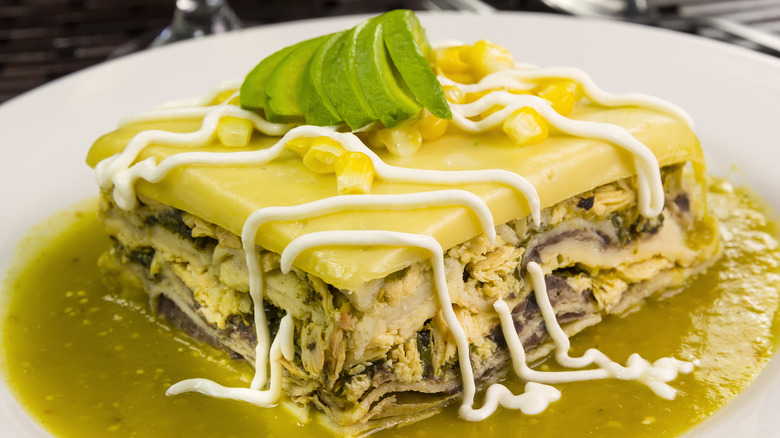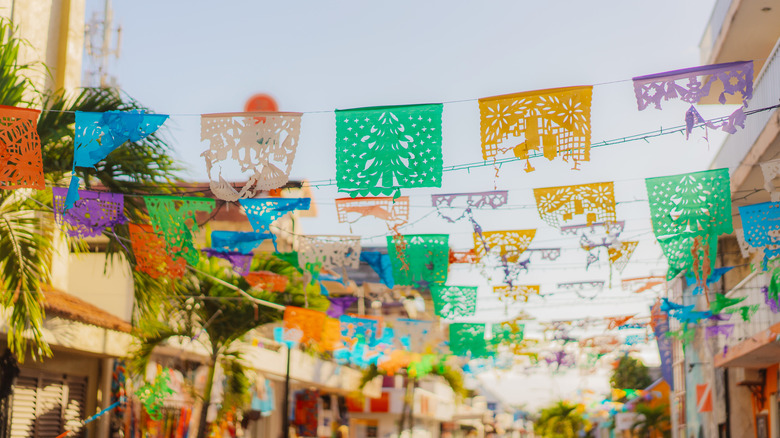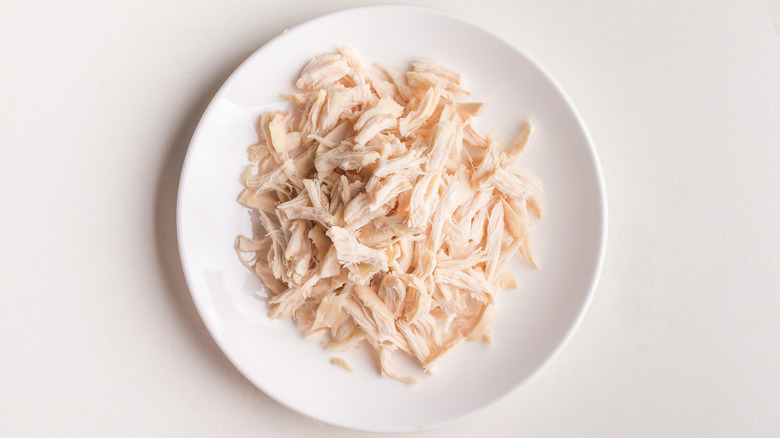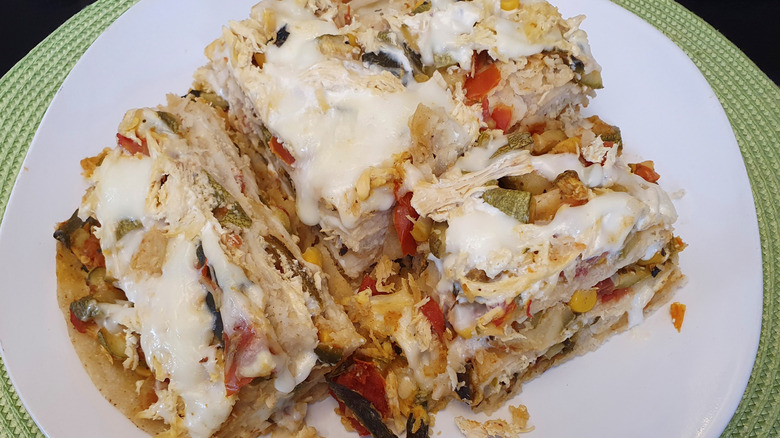Pastel Azteca, The Mexican Casserole You Need To Try
With staples like warm tortillas, hearty proteins, and delicious fresh vegetables, Mexican cuisine is easily one of the most comforting out there. Formed as a result of colonization, mixing Spanish influence and indigenous tradition, Mexican food has grown to become beloved all around the globe. However, whether you're reading from the menu of a European taco truck, enjoying Tex-Mex classics, or experiencing dishes on a trip to Mexico City, there are a few must-try dishes that you likely won't be served when eating out.
In every culture, there are standard dishes families throw together from leftovers or on-hand ingredients that locals always look forward to for weeknight dinners. However, these dishes — often casseroles, soups, stews, or savory pies — are dishes that aren't often served at restaurants, although they hit the spot every time. For many Mexican families, pastel Azteca is the make-ahead casserole dish that is perfect for feeding large crowds and pleasing everyone. With a delicious and comforting ingredients list and hassle-free preparation, this may just be the ultimate weeknight meal to enjoy no matter where you are in the world.
The history of pastel Azteca
Pastel Azteca, meaning Aztec cake or tart in Spanish, is an example of a family-style recipe that has lasted generations. While the exact origins of this dish are unknown, as is often the case with dishes that have centuries-old roots, it is thought to have come from Northern regions, like Baja California or Chihuahua. However, it's also prominent throughout the rest of Mexico where it can go by different names and feature slightly different ingredients. Pastel de tortillas, torta Moctezuma, and pastel indio are a few of the common variations on this dish.
Today, pastel Azteca is often made in Mexican homes when friends and family get together. It is an easy meal that serves a lot of people, and each rendition can be customized to the foods the cook has on hand or personal preferences.
As with most Mexican dishes, pastel Azteca blends Spanish cultural influence while still demonstrating new-world Indigenous ingredients. For example, the chicken and dairy-based products are a sign of European impact, while the tortillas and chilies featured are staples of traditional indigenous dishes.
Ingredients in pastel Azteca
Pastel Azteca is sometimes nicknamed Mexican lasagna due to its layered approach of stacking meat between starchy tortillas. The tortillas used in this dish are typically homemade corn tortillas. Using flour tortillas isn't recommended as it would likely result in a soggy mess that isn't as pleasant to bite into. The protein of choice that's stuffed between the tortillas layers is usually shredded chicken. However, this base can be swapped for other poultry meat like turkey.
The famous creamy Oaxaca cheese is also sprinkled into the casserole, along with heavy cream. However, mozzarella cheese is a common swap for Oaxaca cheese if the product is not readily available.
Fresh veggies, usually a mix of onions, corn, garlic, and various peppers provide a fresh and juicy element to the final product. Roasted poblano peppers are the traditional choice, however, the veggies can be swapped out based on personal preferences. Finally, the pastel Azteca gets smothered in a robust tomato-based sauce. It's a spicy blend of tomatoes, onions, and spicy red chilies. However, a salsa verde works just as well.
If this list of saliva-inducing ingredients has you curious to try making your own, you're in luck. The process of making this dish is quite easy, and it can even be done ahead of time.
How pastel Azteca is made and eaten
Pastel Azteca can be prepared a couple of days ahead of time and simply popped in the oven to heat up. To prepare this dish, first heat up your homemade or store-bought tortillas. This process is essential in securing good-tasting tortillas that have a fresh flavor and can be flexible when being cooked with. The tortillas in this dish are typically fried in oil, but not to the point that they become stiff and crunchy. Once you have a golden yet soft tortilla, it can be layered into a buttered casserole dish.
Once the bottom layer of tortillas is prepared, next you'll layer veggies, meat, dairy, and sauce into your dish. What ingredient you start with is up to you, however, adding in the shredded chicken first can create a sturdy base. Alternating between the five layers is key, though you should make the last layer tortillas and then top it all off with cheese and sauce. When the dish emerges from the oven, it will have a golden crust from the cheese and a hearty layer of sauce.
Once your pastel Azteca is pulled from the oven, leave it to cool for a few minutes before serving. Enjoy with a garnish of creamy avocado, fresh cilantro, and a sprinkling of cotija cheese for an ideal dinner dish.



